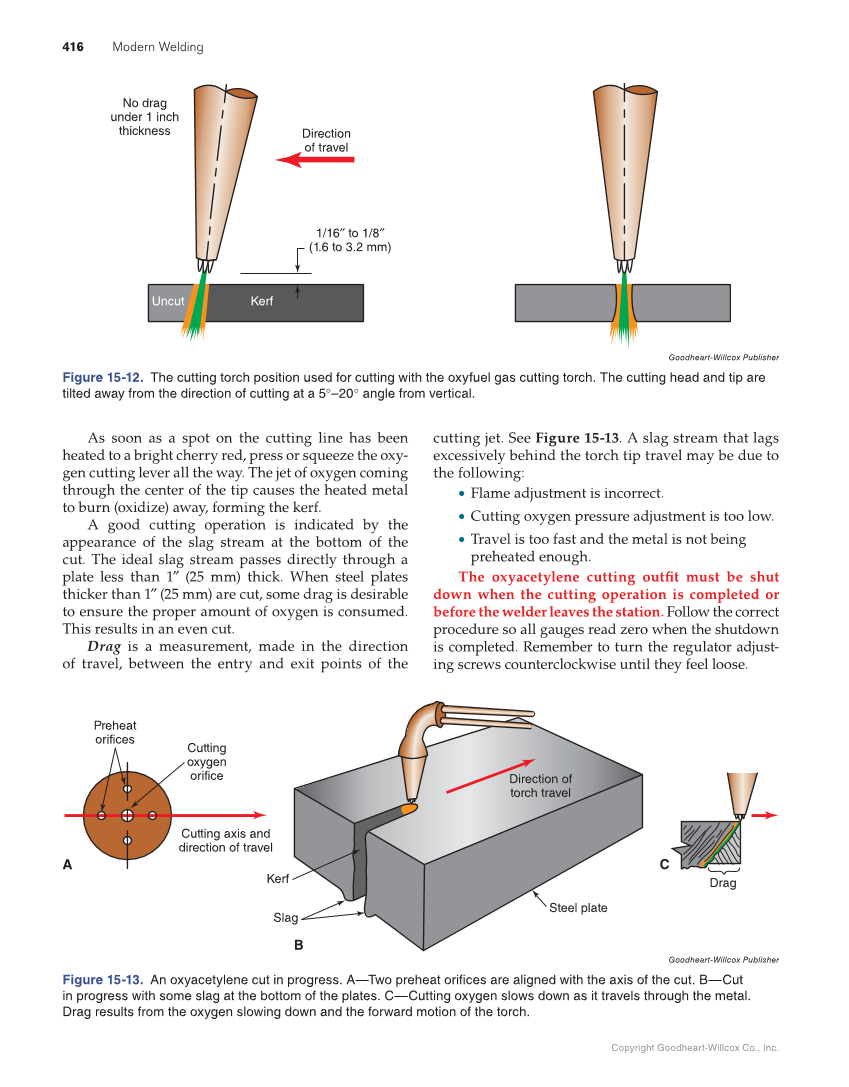416 Modern Welding Copyright Goodheart-Willcox Co., Inc. As soon as a spot on the cutting line has been heated to a bright cherry red, press or squeeze the oxy- gen cutting lever all the way. The jet of oxygen coming through the center of the tip causes the heated metal to burn (oxidize) away, forming the kerf. A good cutting operation is indicated by the appearance of the slag stream at the bottom of the cut. The ideal slag stream passes directly through a plate less than 1″ (25 mm) thick. When steel plates thicker than 1″ (25 mm) are cut, some drag is desirable to ensure the proper amount of oxygen is consumed. This results in an even cut. Drag is a measurement, made in the direction of travel, between the entry and exit points of the cutting jet. See Figure 15-13. A slag stream that lags excessively behind the torch tip travel may be due to the following: • Flame adjustment is incorrect. • Cutting oxygen pressure adjustment is too low. • Travel is too fast and the metal is not being preheated enough. The oxyacetylene cutting outfi t must be shut down when the cutting operation is completed or before the welder leaves the station. Follow the correct procedure so all gauges read zero when the shutdown is completed. Remember to turn the regulator adjust- ing screws counterclockwise until they feel loose. Kerf 1/16″ to 1/8″ (1.6 to 3.2 mm) No drag under 1 inch thickness Direction of travel Uncut Goodheart-Willcox Publisher Figure 15-12. The cutting torch position used for cutting with the oxyfuel gas cutting torch. The cutting head and tip are tilted away from the direction of cutting at a 5°–20° angle from vertical. Cutting oxygen orifice Preheat orifices A Cutting axis and direction of travel Kerf Slag B Steel plate Direction of torch travel C Drag Goodheart-Willcox Publisher Figure 15-13. An oxyacetylene cut in progress. A—Two preheat orifices are aligned with the axis of the cut. B—Cut in progress with some slag at the bottom of the plates. C—Cutting oxygen slows down as it travels through the metal. Drag results from the oxygen slowing down and the forward motion of the torch.
